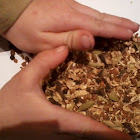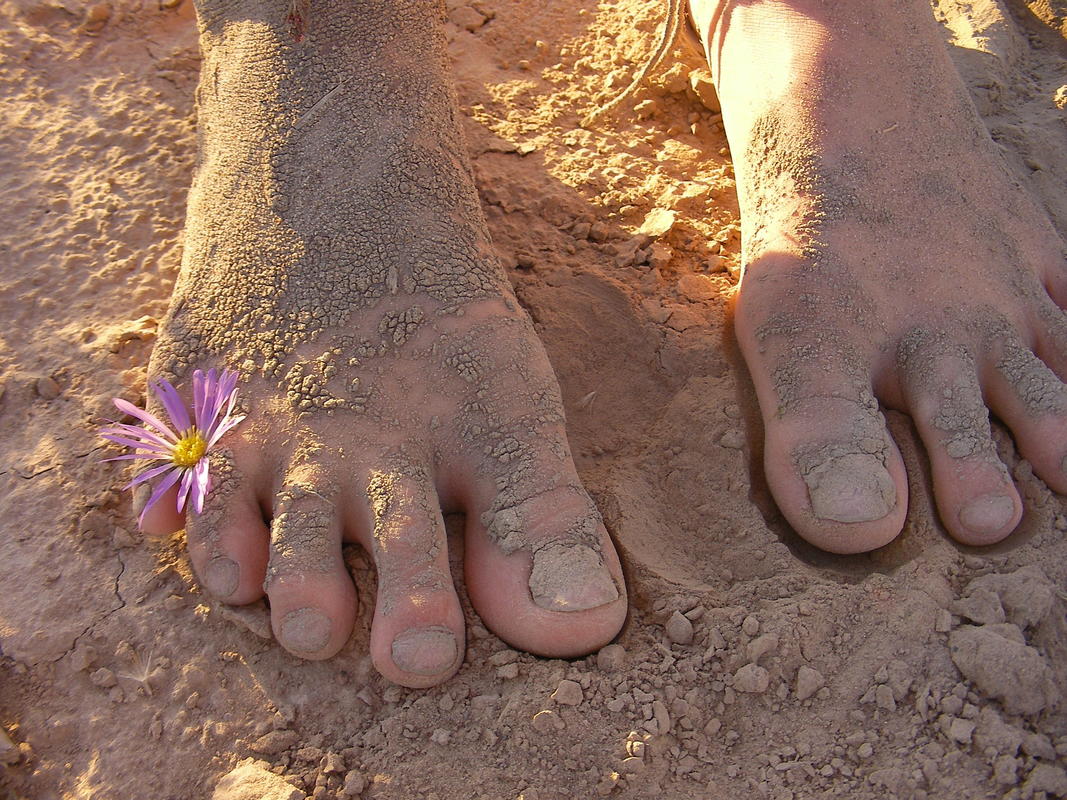|
K..as of today we are on a eating only local vegan foods..I am challenged with what to use as seasonings,,this will be fun to see what happens and how long we make it!!
I am Grateful to the amazing farmers that grow here as well as all the folks that work their asses for us at the markets!! YEAH!! Anyone wanna jump on board with us?? Lower the Carbon Footprint and keep the money here in our expansive community of growers.. ALSO!! I am looking for volunteer families or individuals who would be willing to be part of a photo series inspired by one I saw recently. It will involve the commitment to collect all of your out going trash and recycling for a week. EVERYTHING! Even wrappers. then at the end of the week you and yours will lay in what you would of otherwise disposed of and have your picture taken. This will be a fun and intense project that will bring us a bit closer to looking at our actual impact on the planet. This will also give us the opportunity to upgrade our consumption levels. So CALLING ALL volunteers!! I also need a photographer amateur or professional to donate their time.
0 Comments
Here is our most recent co-creation with Charlotte Anthony!! Long read!! And Worth IT!!!
I learn from the plants and nature. In order to give the kind of explanations "educated people" expect I pick up books and root around in them to find how these things are described. I believe that we cannot base what we do on these explanations or on science in general. I agree with M. Fukuoka that science is a reductive process. Additionally there is mucho detail, maing research very expensive and science goes where it is funded. It is great when we can find the scientific explanations for what we know works. To be successful farmers in these times have to be in front of the explanations and not wait for the science. For the folks in Oregon. Many people have concerns about the sun burning the leaves of their plants, such as blueberry plants, and the failure of crops in the hot summers. The fall planted crops continue to do well One reason for these problems could be the increased sun intensity. Traditional India deals with this with a food forest, planting in layers thereby creating some shade for the plants. One plant they use a lot is Sesbania Grandiflora. It is frost sensitive so not a perennial in colder climates but I recommend it as an annual. It needs 9 months for the pods to mature so it will reseed itself. In India it is pruned to a single leader with no branches. It will grow to 6-8 feet in the first year and will provide nitrogen fixation, roots that hold water and dancing shadow shade. I will describe separately the light levels needed by plants, the best way to determine if the plants need shade. You can observe the plants and see if they are getting too much sun. You can mitigate the sun intensity by extra watering. This works if there is enough water. There is however no longer enough water in India or in places in California. You may have read that I am looking for a desert climate or drought area to green . For example the central valley of California. If you know of any farmers looking for help with their water, please hook me up. This is the basis of the drought work, divided into two parts. The first part is the short version. The second part is the expanded version. PRACTICES TO INCREASE RAIN AND INCREASE GROUND WATER: 1. Open water source. 2. Mulch heaps. Mulch must be covering the ground at all times. 3. Open water source. 4. Earth works to allowwater to percolate into the soil. 5. High numbers of leguminous and non leguminous bore well trees. 6. Deep rooted nitrogen fixing legumes. 7. 20 acre parcel of land. 8. No till or low till toencourage microbes in every way possible. 9. Diversified planting. 10. Hedgerows. 11. Commercial or broad acre production. These practices are well known in India where they have been in use for thousands of years. Unfortunately for India, they are not being practiced very much after the green revolution where farmers have been increasingly using mono-cropping systems. 1. Open water source: clouds need seeding with some moisture .This happens with the open water. Clouds also need particulate matter to act as a nidus for the rain drops. Trench irrigation covered with mulch is preferable to drip irrigation. Trench irrigation actually feeds plants with under water from underneath, highly valuable and is more conservative and sustainable than drip irrigation. 2. Mulch a. Mulch can be grown on site, and the heaps need to be at least every 30 feet. b. In a low water system, mulch on the plants hold in the water and allows the dew to coalesce overnight. The mulch can be a brown mulch or a living mulch. The soil needs to be covered to protect the microbes from the sun. You can also plant slug catcher plants and pick the slugs off 3. Earth works to allow water to percolate into the soil to recharge the ground water. The water is stored underground. One pond or more is needed so there is a continuous open source of water, even during the driest times. The pond can be long and thin with trees surrounding for minimum evaporation. 4. Deep rooted trees. a. These trees need to be planted from seed as usually the tap root is destroyed between the nursery and its final planting. Also nurseries tend to overwater the seedlings and this leads to less resilient trees. The specific trees for your area need to researched. The optimal trees are deep rooted, very fast growing, and ideally trees that can be coppiced . At least 50% of these trees need to be nitrogen fixing. Some deep rooted trees that cannot be coppiced may be included. An interesting tool for this research is analog climate zones. http://www.twovisionspermaculture.com/?s=building+a+climate+analogue b. Plant deep rooted (tap root) nitrogen fixing trees, to shade other plants and for chop and drop mulch. In the early years tree rows can be in swaths, maybe two rows for a total of a foot wide with other plantings in the next row5 feet. In a garden situation Sesbania Grandiflora may be used. c. Other deep-rooted trees, can be timber, fruit, nut ,insect and pollinator habitat etc. d. Bore well trees, (bore well as in a well dug with an auger) are a passive way of pulling water up from under the ground without actually using a bore. The mycorhizzals share the water they bring up with the other plants. The high tech method of bringing the water that has been stored in the ground to the service is a bore well, the low tech method is a bore well tree. In the forest these bore well trees work together to provide water to new seedlings. 5. Grow deep rooted legumes in swaths between whatever is planted. (5 foot of millet, 5 foot of maybe alfalfa, 5 feet of dry land rice, 5 foot of trees. There is information to suggest that planting ½ the field with legumes will actually yield equally to growing without the legumes. AThe legumes would yield another crop. Alfalfa could be used for fodder, for seed, and for mulch .another option is beans and then the plants used for mulch after the beans are threshed. 6. Needs a 20 acre parcel to work to increase the rain. There is a critical mass of area needed for this. Do not know what it is exactly. In India where I saw it, the parcel was 17 acres. This might need to be 25 acres or 50 acres in desert areas. 7. No till or low till a. Seriously encourage and seed microbes to create a living soil. Tilling destroys microbes. Living soils collect water etc. Yes we can till the first time to open the soil. After the first tilling, then we want to cut off the tops of the plants leaving the roots in the ground for maximum microbes and dipple the seed into the bare spaces to plant. One way to dipple the seed: is tothrow down one seed and use a long stick to push the seed under and then step on it. There is machinery to do this if you have a broad acre farm. Also ,one of the projects I will be working on is appropriate technology devices to be used There aremany that I learned about in India thatwill be a good business for someone. b. Make our own microbe tea. Elaine Ingham suggests that we take the weeds growing on soil we plan to use. Do not pull them up by the roots. Leave the roots in the ground. The roots are the best food the microbes have. Take the leaves and put them in a barrel. Then fill the barrel with water to the level of the weeds. Stir in one direction for one minute and then in the opposite direction for another minute at least once a day. (this is vortex stirring) Ferment for 21 days. Then dilute 10:1 and spray out or use a watering can. You can do this every 10 days the first year. You will not have to be repeat the next year if you do not till or dig the soil and are satisfied with your yields. Please go to Elaine Ingham for exact method she uses. I used her name because I got the idea from her. I used to buy the microbes over the internet. c. Will the weeds come back if we do not pull them out by the roots? If we are lucky the weeds will come back. When they begin to shade the plants we want, we can harvest them and use them again for our microbe tea or we can lie them down for mulch. For the mulch to be effective it needs to be at least 3 inches deep or the plants will just dry out. choose a small section of the land and put the mulch there if there is not enough mulch material for the whole piece to be 3 inches deep. d. As Elaine Ingham says, microbes can grow very quickly, in fact microbes could grow to the size of the earth in one day. Microbes have a short life cycle so they make significant organic matter. They eat dead microbes, as well as plant sugars and they love to live in relationship to plant roots. They also eat soil particles, so you can drastically increase microbes by adding azomite or any kind of rock dust. Also,if you have large soil particles you can pulverize some of your soil, or if you have a lot of silt somewhere you can use this to feed the microbes. If you put compost out, make sure you cover the compost with soil. Unbroken down food is better than compost for feeding microbes than finished compost. And most of you know about biochar. This can be ground into small particles and put onto the soil and covered with mulch or at least plant leaves. 8. Diversified plantings feed a living soil. Grow fruit and nut trees, medicinal herbs, vegetables in addition to already suggested bore well trees, nitrogen fixing legumes. Grow the nitrogen fixing trees and legumes so that mulch is available near every plant. a. Sooner or later many of the nitrogen fixing trees will be removed. We suggest planting them every 5 feet in all directions in the beginning and the fruit and nut trees will expand into much of this space. b. Non-hybrid seeds are in general much more resilient. c. If there are 20 different plants ½ of which are nitrogen fixing, fertilizer of any kind will not need to be added. The plants and microbes will fertilize each other. d. See my web site for a crop cycle that has been done for hundreds of years, each year the soil becoming more alive. e. There is a medium point for both fertilizer and water where the plant produces optimally. Erring on either side causes less production. Plants do not have a feedback mechanism for too much fertilizer whether organic or chemical. When they get too much fertilizer they take it up. Then for osmotic balance they take up water. This causes the cells to grow larger which makes for pretty plants, but they are out of balance and prone to insect,fungus and virus problems. (this mechanism of results from over-stimulating the plants is from Regenerating the Soil by Claude Bourguignon). 9. Hedgerows at least every 750 feet and around the outside of the planting for wind barriers, pollinators, plant pest predators, food, timber, etc. 10. Commercial or broad acre production. a. As the plot size needs to be 20 acres this is usually a broad acre production site. b. Another alternative would be a lot of small farmers getting together. c. These plots could be done by non-governmental organizations or government organizations. d. This model shows presupposes the farmers making enough money from these practices with little capital input to make it worth their while to do it. Seeing how these methods have worked over 4 years in Borneo there is a video from Willi Smits on his organgutang project . In his project they have measured the ground water levels and the rain fall to show how his work increased both. https://www.youtube.com/watch?v=3vfuCPFb8wk Another farm using all of these practices, working without irrigation or fertilizer for the past 17 years where the rainfall is 650 mm (26 in.) mainly between June and November) with amazing yields, is Narsanna Koppula’s farm near Hyderabad, India. http://permacultureindia.org/permaculture-farms. https://www.youtube.com/watch?v=UlZHh_1EqfU You know those times in life when you get a scrap of information and it changes your whole way of thinking? Well, yesterday my permaculture mentor Charolett Anthony recommended a movie to me. I sat with my children and watched it. My son 7 and my daughter 12 were brought to tears. We knew the world was in need of our help,yet,were unaware at how much. The experience was amazing, my daughter who sometimes has a challenge with my “extreme” choices in sustainability finally got it. She found a level of respect and understanding for me and our choices as a family and best of all she jumped on board to help me save the world!! The team is growing and I choose to stay in a place of LOVE while I navigate the world. I am grateful to all the people involved in putting this film together, and, even more, I am grateful to those who are making massive change in sustainable choices. Please take the time to watch this movie! AND BRING TISSUES!!
http://www.huffingtonpost.com/entry/time-to-choose-watch-the-new-film-from-oscar-winner-charles-ferguson_565c5678e4b079b2818acee0 |
Wendy and Children!We are a family of 3 that is passionately living a Life surrounded by the Tipi and deep connection with nature. Mother and 2 children. Archives
January 2024
Categories |



 RSS Feed
RSS Feed
